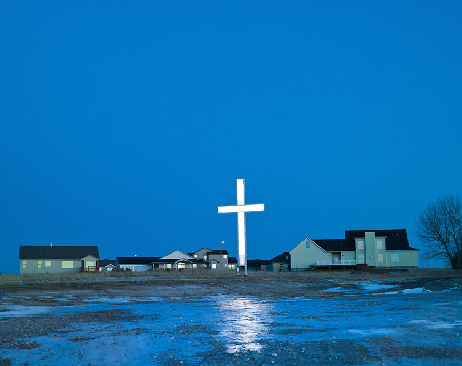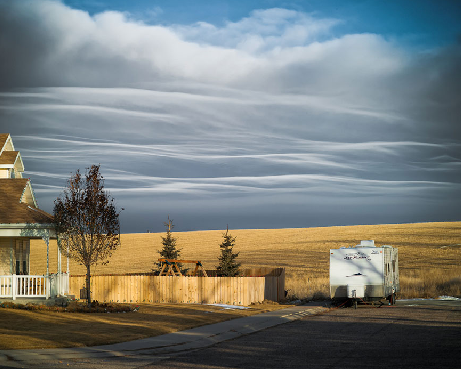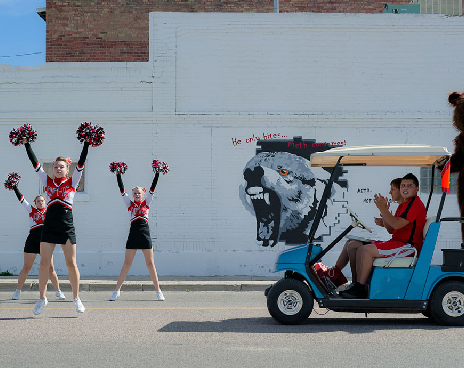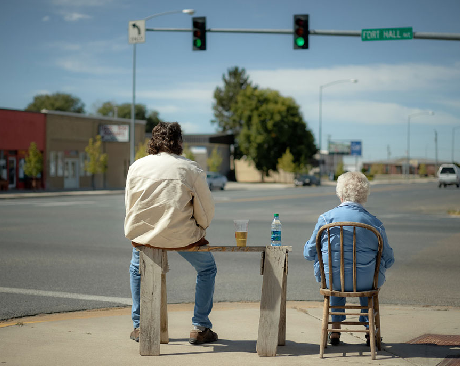
Steve Davis, via Lens
As a sort of continuation of my post two weeks ago about The Goggles' Welcome to Pine Point, I want to focus this week on Steve Davis' As American Falls. This series of photos documents American Falls, the now-declining Idaho town where Davis grew up. Davis describes the town's death as "as slow as it is unspectacular," and these images produce a feeling of stillness that differs in interesting ways from the retroactive intimacy that the Goggles' project produces.

While Welcome to Pine Point takes the audience on a journey filled with intimate, almost voyeuristic moments and the associative links that make up personal recollection, As American Falls feels more distant, if no less poignant. The composition of the above two images contributes to this distance; the viewer is far away from the houses, at a strange angle, as if lying in the mud; the second diffuses the viewer's focus, with a few scattered elements unified by a beautiful but slightly ominous sky.

There is distance in this image too; the subjects' faces aren't discernible, and it is difficult to tell what is actually going on. While this is presumably some kind of homecoming parade (what looks like a costumed mascot is visible on the far right of the photo), the information we need to be certain of that has been removed. The image is like a confusing childhood memory--there were cheerleaders, so-and-so was there, but what were we doing? When was this? Our access is highly limited.

What I really like about Davis' project is the way this lack of access can produce a strange, confusing longing in the viewer. The mood seems appropriate to this kind of loss, which is, as Davis points out, slow and unspectacular. What there is to know about the town is slowly slipping away, and what is left are paused moments, simultaneously vivid (particularly in the first two photos) and incomplete. In a way, the images construct the decline of a town as the gradual loss of personal memories of the town, thereby making the town's decline legible to anyone who has moved away from where he or she grew up or has just grown older, losing bits and pieces of a previously robust sense of place.
Recent comments
2 years 29 weeks ago
2 years 44 weeks ago
2 years 44 weeks ago
2 years 50 weeks ago
3 years 4 weeks ago
3 years 4 weeks ago
3 years 4 weeks ago
3 years 6 weeks ago
3 years 6 weeks ago
3 years 6 weeks ago